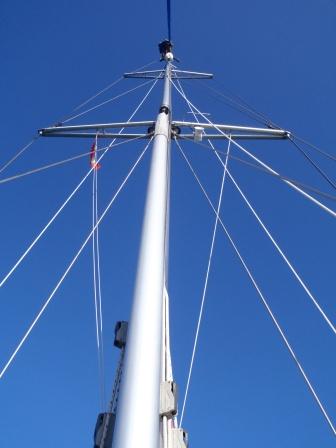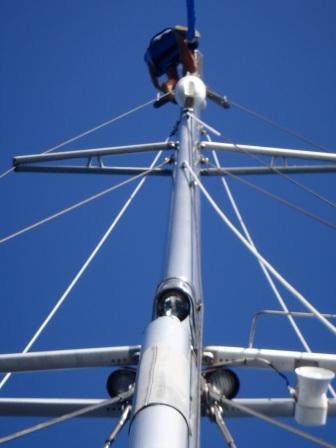Running repairs

VulcanSpirit
Richard & Alison Brunstrom
Wed 6 Apr 2011 22:43
|
I have replaced all our navigation light bulbs with
LEDs (we have four - red and green on the bow, white at the stern, and a
tricolour at the top of the mast). Old fashioned bulbs don't last very long, and
they tend to blow out in a storm when it is dangerous to change the bulb at
the bow, thrashing wildly up and down and getting smothered in waves coming
over the deck - and in the dark, of course). But it's also dangerous to sail
with defective lights. LEDs last for 50 000 hours and use considerably less than
a third of the power of old style bulbs - but we had several bulbs left and
since they cost about £5 compared with about £45 for an LED I decided to use up
the old bulbs and save some money by leaving an old style bulb in the anchor
light (boats at anchor should show an all-round white light at night). In
retrospect this was a stupid idea for two reasons - firstly the anchor light is
left on in the tropics for twelve hours a day using lots of power, whereas we
scarcely use the boat at night at present, and secondly it meant another trip up
the mast to change the bulb when it inevitably blew (of course it went when we
were anchored in a difficult location next to the narrow Anegada
fairway and really needed to be seen, and the boat was moving around too
much in the waves to make going up the mast a practical and safe
proposition).
But as soon as we could Alison went up early one
morning in a lull to change the bulb (our last old style one because we have no
spare LEDs on board). But as soon as we get to St Martin I'm buying an
LED!! Anyway, here she is on Mothers' Day in a bosun's chair busy changing
a light bulb (she's lighter than me, so I get to stay on deck doing the
rope handling and hoping to prevent a nasty fall):
  It isn't as high as it looks - 22m above the sea,
20m off the deck - but the top swings around like an upside-down pendulum even
when the sea is fairly flat. A head for heights is a
help!
|